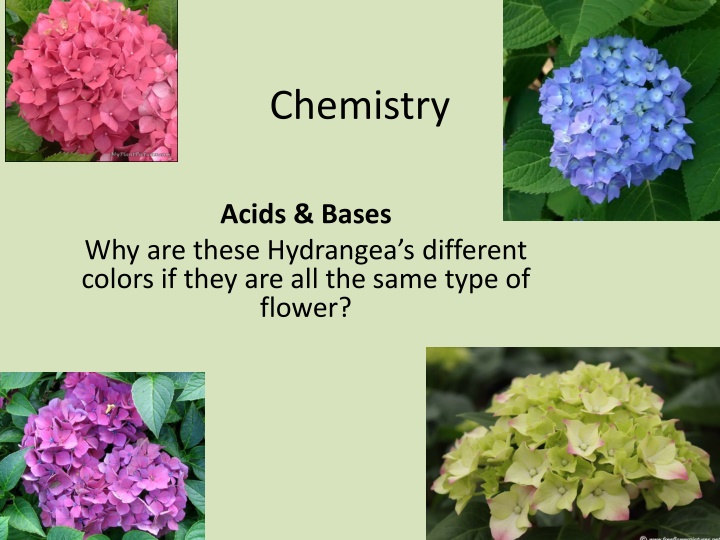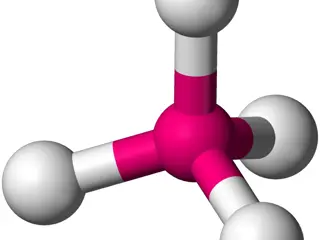Why Do Hydrangeas Change Colors?
Hydrangeas of the same type can display different colors due to variations in soil pH affecting the availability of aluminum ions. This triggers different pigments, resulting in color differences. Explore the fascinating phenomenon of color change in hydrangeas, driven by the principles of acids and bases, pH levels, and the impact of environmental factors.
Download Presentation

Please find below an Image/Link to download the presentation.
The content on the website is provided AS IS for your information and personal use only. It may not be sold, licensed, or shared on other websites without obtaining consent from the author.If you encounter any issues during the download, it is possible that the publisher has removed the file from their server.
You are allowed to download the files provided on this website for personal or commercial use, subject to the condition that they are used lawfully. All files are the property of their respective owners.
The content on the website is provided AS IS for your information and personal use only. It may not be sold, licensed, or shared on other websites without obtaining consent from the author.
E N D
Presentation Transcript
Chemistry Acids & Bases Why are these Hydrangea s different colors if they are all the same type of flower?
ACIDS & Bases [H+] Increase in Hydrogen Ions = decrease in pH pH less than 7 is ACIDIC Bases = Increase in pH Decrease in Hydrogen Ions pH greater than 7 in BASIC
How do Buffers resist a change in pH? The Buffer contains a weak acid and a strong base or a strong acid and a weak base. Buffers resist a change in pH when limited amounts of acid or bases are added. There are enough Hydrogen or hydroxide ions to add to an acid or a base, but not to change it significantly.
Blood Real world reason for a buffer Our Blood has to be maintained around 7.4. If our blood gets out of range then Proteins (enzymes) lose their ability to function. It will not fluxuate below 7.1 or above 7.7. If the blood drops to 7.1 then acidosis occurs Due to overexerted cramps in leg Lactic acid in the muscle tissue If the blood raises to 7.7 then alkadosis
Body helps maintain 7.4 blood pH in 3 ways. 1. Excess acids or bases will be excreted in the urine. 2. Carbonic Anhydrase (enzyme) releases 600,000 molecules of CO2per minute. 3. The body contains buffering systems
Blood must maintain an Acid Base balance Acids and bases are deposited into the bloodstream from normal everyday chemicals from metabolic reactions. During this metabolic rate: H2CO3/ HCO3- equilibrium will shift Lungs will alter the rate [CO2] from the body Kidneys can alter the rate and removal of HCO3-
Stomach Stomach acid must be maintained around 1.6 1.8 pH Antiacids treat indigestion and heartburn Bases that neutralize digestive acids
Activity Vinegar + Baking Soda 25 ml + 1 gram = ? Learn about Conservation of Mass
Activity Measuring the pH of various substances Without smelling any of the liquids, measure the pH Write the Letter of the substance on your paper in the first Column In the second column, write the pH of that substance. Identify where it is an Acid or a Base in the third Column. Substance A B C D E pH Acid or Base
Adult Ed Project Chemistry Research Batteries .5 credits What is a battery? What types of Batteries are there, name and discuss 3. What chemicals do batteries store, name and discuss 3. How do batteries work, explain in detail, using diagrams if need be. This assignment should be about 2 3 pages in length.
Works cited Chemistry in the Community, p. 370 - 380 Chemistry Matter & Change, p. 622























